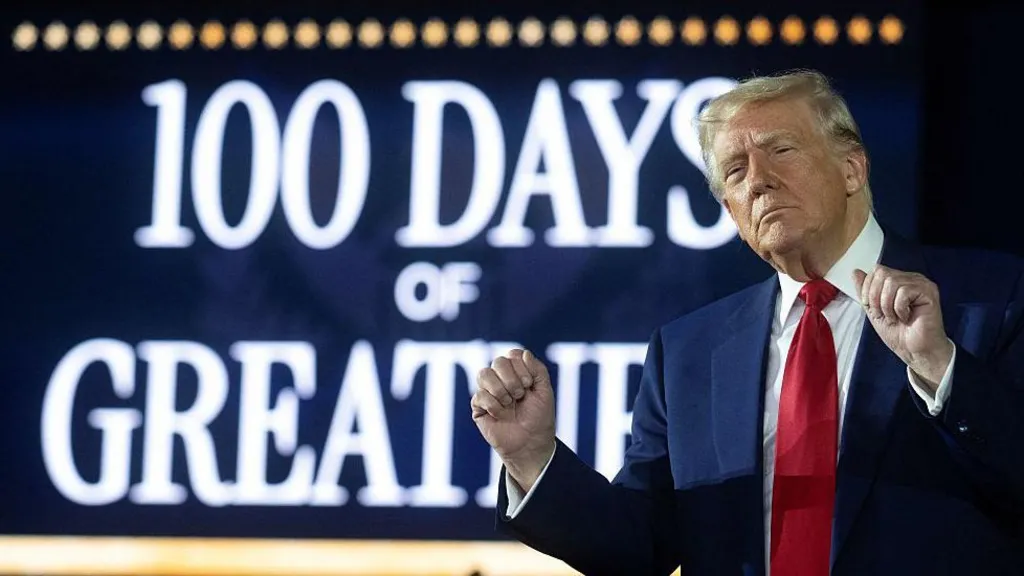US President Donald Trump has taken action to ease the impact of new tariffs on the car making industry, which had sparked warnings about higher prices and the potential for significant hits to sales and production.
The change will allow companies with US factories to reduce the amount they pay in import taxes on foreign parts, using a formula tied to how many cars they sell and the price.
The provision is intended to provide relief to businesses for two years as they rework their supply chains, the White House said.
Officials also moved to shield car firms from facing mounting tariffs on the same items.
They said businesses that have to pay tariffs on cars and parts would not be charged other duties the administration has imposed on steel, aluminium and goods from Canada and Mexico.
The changes came as Trump visited Michigan on Tuesday for a rally to mark his first 100 days in office.
The state is home to the so-called Detroit Three carmakers – Ford, General Motors (GM) and Stellantis – and a network of more than 1,000 major suppliers to the industry.
Those firms and the wider industry have been plunged into uncertainty since Trump announced new 25% tariffs on cars and car parts in March, saying he wanted to expand domestic car manufacturing – an industry the White House sees as key to national security.
Trump's tariff announcement drove a spike in sales, as consumers rushed to get ahead of the tariffs. But it has also left businesses scrambling to respond.
Ahead of the latest announcement, General Motors and other carmakers said they welcomed the plans to soften the impact of the measures.
"We're grateful to President Trump for his support of the US automotive industry and the millions of Americans who depend on us," GM chief executive Mary Barra said in an emailed statement.
"We appreciate the productive conversations with the President and his Administration and look forward to continuing to work together."
General Motors, which reported its quarterly performance to investors on Tuesday, also said on Tuesday that it needed to rework its forecast for the year and pulled its prior guidance.
In an unusual move, it also postponed the call with analysts that had been set to discuss the results.
